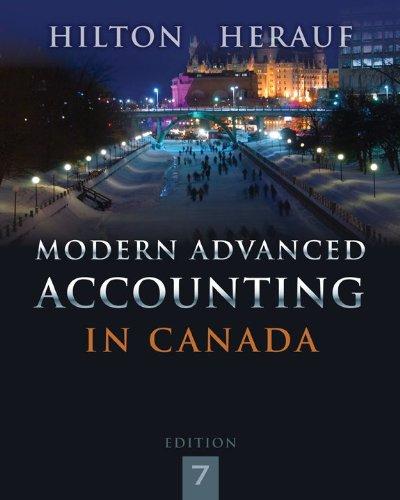In Year 1, Victoria Textiles Limited decided that its Asian operations had expanded such that an Asian
Question:
VTIL proved to be quite successful, as shown in the following financial statements at December 31, Year 4. After one year of operations, VTIL had borrowed funds and expanded facilities substantially, as the initial market estimates had turned out to be quite conservative. However, during this time the rupee had fallen in value relative to the Canadian dollar. As a result, Victoria€™s management was somewhat confused about how to evaluate VTIL€™s success, given the changing currency values.
.png)
Additional Information
€¢ The exchange rate at January 1, Year 2, when VTIL was originally established, was $0.075 per rupee.
€¢ Of the original investment of IR10 million, IR4 million was used to acquire plant and equipment, which is being depreciated on a straight-line basis over 10 years.
€¢ At June 30, Year 3, an expansion was completed at a cost of IR6 million, which was financed entirely by a six-year note obtained from an Indian bank. Interest is to be paid semiannually. The exchange rate at July 1, Year 3, was $0.062 per rupee. The new expansion is also to be depreciated on a straight-line basis over 10 years. (A half-year 9€™s depreciation was recorded in Year 3.) Depreciation expense of IR 1,000 in Year 4 and IR700 in Year 3 is included in operating expenses.
€¢ Inventory is accounted for on the FIFO basis. The inventory at the end of Year 3 and Year 4 was acquired when the exchange rates were $0.045 and $0.027 per rupee, respectively.
€¢ Sales, purchases, and operating expenses were incurred evenly throughout the year, and the average exchange rate for the year was $0.031.
€¢ The prepaid expenses and unearned revenue at December 31, Year 4, arose when the exchange rates were $0.03 and $0.028 per rupee, respectively.
€¢ Income taxes were paid in equal monthly installments throughout the year.
€¢ Dividends of 3,500 in Year 4 and 500 in Year 3 were declared and paid each year on December 31.
€¢ The foreign exchange rates per rupee at each of the following dates were as follows:
Dec. 31, Year 3 ..... $0.041
June 30, Year 4 ..... $0.036
Dec. 31, Year 4 ..... $0.025
Required:
(a) Prepare a Canadian-dollar balance sheet at December 31, Year 4, and an income statement for the year then ended, assuming that VTIL€™s functional currency is as follows:
(i) The Canadian dollar
(ii) The Indian rupee
(b) Which method should Victoria Textiles Limited apply to its investment in this subsidiary? Explain.
The value of one currency for the purpose of conversion to another. Exchange Rate means on any day, for purposes of determining the Dollar Equivalent of any currency other than Dollars, the rate at which such currency may be exchanged into Dollars...
Step by Step Answer:

Modern Advanced Accounting In Canada
ISBN: 9781259066481
7th Edition
Authors: Hilton Murray, Herauf Darrell





